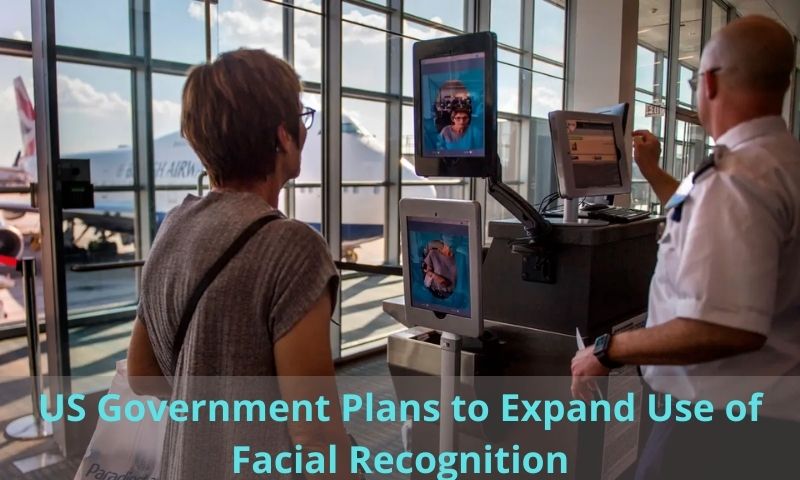A new report from the Government Accountability Office states that ten federal agencies expressed their plans to expand their use of facial recognition technology by 2023.
The news earned numerous complaints from privacy advocates with regards to this type of technology.
The report that was published on August 24 surveyed 24 federal agencies and found that most of them were using facial recognition technology.
A total of 14 of the agencies were using it to unlock their agency-issued smartphones, while two were using it to verify the identities of people visiting government websites.
Six of the agencies were using it to generate leads in criminal investigations, and 10 agencies said they were planning to expand its use.
“This technology is dangerous. It leads to people being falsely arrested, it invades our privacy, it deters people from going to protests,” says Adam Schwartz, senior attorney at the Electronic Frontier Foundation.
“The government should not be using it at all, so it is pretty sad to read that they’re actually expanding their use of it.”
Recommended Read: T-Mobile CEO Apologize for Hack of 50M User Data
What does this mean to Citizens?
You may be using facial recognition to simply unlock your phone, but with this technology employed by the federal government, it can be used to generate leads in a criminal investigation, monitor locations, and check for individuals on the watchlist.
“We are always trying to tell people how they can practice surveillance self-defense, like using encryption or strong passwords, but with face surveillance, there’s much less self-defense to be done,” Schwartz says. “Most of us show our face when we move about the public.”
According to Schwartz, using this technology could lead to more false arrests and citizens’ surveillance.
The most common example is, at least three Black men have been falsely arrested because surveillance mistook them for someone else. This technology has also been used to identify people who were present at Black Lives Matter protests.
Recommended Read: Beware! The “Joker” Virus is Back, How to Stay Protected?
How did these Facial Recognition companies obtain all their data?
Reports say that some of this software the government uses has accumulated its gallery of people’s faces by sweeping publicly available data sources, like TikTok or Instagram, for photos.
The Department of Homeland Security and the Department of Justice both reported using Clearview, a company currently being sued for scraping social media for photos to fill its database.
“There are rules and guidelines in place with regards to the use of personal information by the government,” says Ashkan Soltani, former chief technologist of the Federal Trade Commission, “but they’re essentially laundering some of that by relying on third-party commercial entities that built their databases and trained their models based on publicly-available data.”
Normal pictures that a user uploads or shares on social media is not subject to the same dereliction that the user thinks if the government is directly collecting them.
Experts say that this is dangerous not just from a privacy perspective, but also from a public safety perspective.
“Some of these systems have high false-positive rates where they identify the wrong individual or misrepresent certain communities,” says Soltani.
Soltani’s main concern is that the use of this technology expands the power of the government.
“Oftentimes we strike a balance of power with regards to surveillance and government influence, and that’s essentially dictated by manpower, hours, and resources,” he says.
“But if you translate that to automated technology that can follow you around with no added cost to law enforcement, then the balance of power is upset, and the invasion of privacy is greater.”
Is this Technology Effective?
This kind of technology is used to allow more people to do their jobs more efficiently, but its efficacy is still debatable. U.S. Customs and Border Protection said since 2018, they have used this technology to prevent “more than 850 people” from illegally entering U.S. borders.
However, this number seems to be remarkably low considering over 88 million people have been scanned by these systems.
“We know that there’s high error rates, both with people being falsely identified as a suspect, or failing to identify an actual suspect,” says Schwartz.
“When we see data about so-called success, it seems like a pretty minuscule rate of finding fraud. The costs far outweigh any supposed benefits.”
The system can also be fundamentally abused. Uighurs, a persecuted Muslim minority in China, have been subject to surveillance based on facial recognition.
Senators Bernie Sanders and Elizabeth Warren, among others, sponsored a federal bill in hopes to ban all government use of facial recognition technology.
Consequently, after much public pressure, Amazon announced that it would no longer be selling Rekognition, its facial recognition software, to police because of the lack of governance on how it was being used. Furthermore, 20 cities and three states across America have banned facial recognition technology.
“It is so dismaying to see the government moving in exactly the wrong direction,” says Schwartz.
In an email, GAO director Candice Wright says that the GAO expects to start work soon on examining privacy issues related to federal law enforcement’s use of facial recognition technology.

